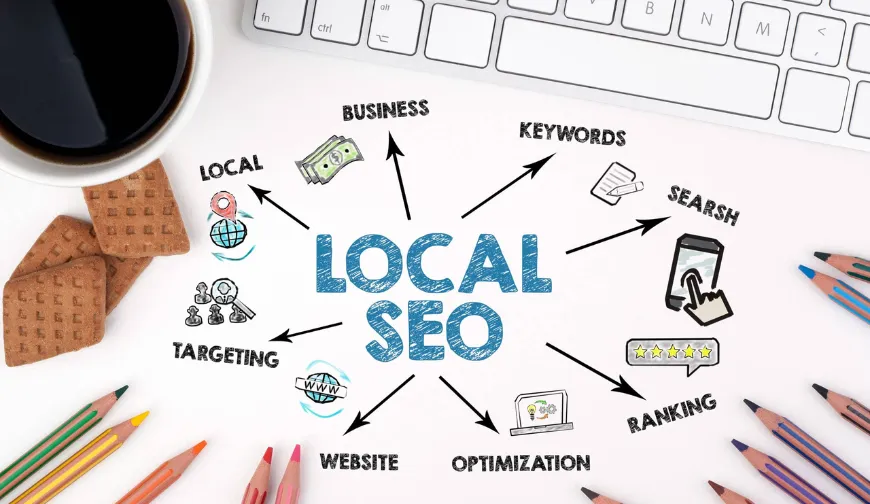On-page SEO is a fundamental aspect of search engine optimization that focuses on optimizing individual web pages to improve their search engine rankings and attract organic traffic. By implementing effective on-page SEO techniques, you can enhance your website’s visibility and ensure it ranks higher on search engine results pages (SERPs). In this article, we will explore the top on-page SEO techniques that can help boost your website’s performance.
What is On-Page SEO?
On-page SEO refers to the practice of optimizing elements within a web page to improve its search engine rankings. This includes optimizing content, HTML source code, and overall user experience. On-page SEO is crucial because it helps search engines understand the content of your web pages, making it easier for them to index and rank your site.
Why is On-Page SEO Important?
1. Improved Search Engine Rankings
Effective on-page SEO techniques can significantly improve your search engine rankings. By optimizing various elements of your web pages, you signal to search engines that your content is relevant and valuable to users, increasing the likelihood of ranking higher.
2. Enhanced User Experience
On-page SEO also focuses on enhancing the user experience. When users find your website easy to navigate and informative, they are more likely to stay longer, reducing bounce rates and increasing engagement.
3. Increased Organic Traffic
Higher search engine rankings lead to increased visibility, which in turn drives more organic traffic to your website. By attracting more visitors through search engines, you can boost your chances of conversions and sales.
Top On-Page SEO Techniques
1. Optimize Title Tags
Title tags are one of the most important on-page SEO elements. They appear as clickable headlines in search engine results and provide a brief description of the page’s content. To optimize your title tags:
- Include Primary Keywords: Incorporate your primary keywords naturally into the title tag.
- Keep it Concise: Aim for 50-60 characters to ensure your title tag is not truncated in search results.
- Make it Compelling: Write a compelling title that encourages users to click.
2. Write Effective Meta Descriptions
Meta descriptions provide a brief summary of the content on a web page. Although they do not directly impact search rankings, they influence click-through rates. To optimize your meta descriptions:
- Incorporate Keywords: Include primary and secondary keywords naturally.
- Keep it Concise and Relevant: Aim for 150-160 characters and ensure the description accurately reflects the page’s content.
- Use a Call-to-Action: Encourage users to click by including a call-to-action, such as “Learn more” or “Read now.”
3. Use Header Tags Appropriately
Header tags (H1, H2, H3, etc.) are used to structure the content on your web pages. They help search engines understand the hierarchy of your content and improve readability for users. To optimize your header tags:
- H1 Tag: Use only one H1 tag per page, containing your primary keyword, as the main title of the page.
- H2 and H3 Tags: Use H2 and H3 tags to organize subheadings and sections of your content, incorporating secondary keywords where appropriate.
- Maintain a Logical Structure: Ensure your headers follow a logical structure to enhance readability.
4. Optimize Content for Keywords
Content optimization is crucial for on-page SEO. To optimize your content for keywords:
- Conduct Keyword Research: Identify relevant keywords with good search volume and low competition using tools like Google Keyword Planner, SEMrush, and Ahrefs.
- Incorporate Keywords Naturally: Integrate primary and secondary keywords naturally throughout your content, including in the introduction, body, and conclusion.
- Use Synonyms and Related Terms: Include synonyms and related terms to make your content more comprehensive and relevant.
- Avoid Keyword Stuffing: Focus on creating valuable content for users rather than overloading it with keywords.
5. Enhance URL Structure
SEO-friendly URLs are short, descriptive, and include relevant keywords. To optimize your URL structure:
- Keep it Simple: Use short and descriptive URLs that accurately reflect the content of the page.
- Include Keywords: Incorporate primary keywords in the URL, separated by hyphens.
- Avoid Special Characters: Use hyphens instead of underscores and avoid using special characters and numbers.
6. Optimize Images
Images enhance the visual appeal of your web pages and contribute to a better user experience. To optimize images for SEO:
- Use Descriptive File Names: Name your image files with descriptive, keyword-rich names before uploading them to your site.
- Add Alt Text: Include relevant keywords in the alt text to describe the image content to search engines.
- Compress Images: Reduce the file size of images to improve page load speed without compromising quality.
- Use Proper Formats: Use appropriate image formats such as JPEG for photos and PNG for graphics with transparent backgrounds.
7. Improve Page Load Speed
Page load speed is a crucial factor for both user experience and search engine rankings. To improve your page load speed:
- Use a Fast Hosting Provider: Choose a reliable hosting provider that offers fast loading times.
- Enable Browser Caching: Allow browsers to store cached versions of your pages to reduce load times for returning visitors.
- Minimize HTTP Requests: Reduce the number of HTTP requests by combining files and using CSS sprites.
- Optimize Images and Videos: Compress images and use video formats that load quickly.
- Enable Compression: Use Gzip or other compression methods to reduce the size of your HTML, CSS, and JavaScript files.
8. Create High-Quality Content
Creating high-quality, valuable content is essential for on-page SEO. To ensure your content is top-notch:
- Focus on Relevance and Value: Provide content that addresses the needs and interests of your target audience.
- Use Engaging Formats: Incorporate various content formats such as blog posts, videos, infographics, and podcasts to keep users engaged.
- Keep Content Fresh and Updated: Regularly update your content to ensure it remains relevant and accurate.
- Incorporate Internal and External Links: Use internal links to guide users to related content on your site and external links to reputable sources to enhance credibility.
9. Implement Internal Linking
Internal linking helps search engines understand the structure of your website and distributes link equity across your pages. To optimize internal linking:
- Use Descriptive Anchor Text: Use relevant keywords as anchor text to describe the linked content.
- Link to Relevant Pages: Ensure internal links point to relevant and related pages to enhance user experience.
- Maintain a Logical Structure: Create a logical linking structure that guides users through your site seamlessly.
10. Optimize for Mobile
With the increasing use of mobile devices, optimizing your website for mobile is crucial. To ensure your site is mobile-friendly:
- Use Responsive Design: Implement a responsive design that adjusts to different screen sizes and devices.
- Simplify Navigation: Make navigation easy and intuitive for mobile users.
- Optimize Load Times: Ensure fast loading times on mobile devices by optimizing images and minimizing code.
- Test Mobile Usability: Regularly test your site’s mobile usability using tools like Google’s Mobile-Friendly Test.
Conclusion
On-page SEO is a critical component of your overall SEO strategy. By implementing these top on-page SEO techniques, you can improve your website’s visibility, attract more organic traffic, and enhance the user experience. Focus on optimizing title tags, meta descriptions, header tags, content, URLs, images, page load speed, and internal linking. Additionally, create high-quality content and ensure your site is mobile-friendly. By following these best practices, Keyword.cat can help your website achieve higher search engine rankings and drive more targeted traffic to your site.




